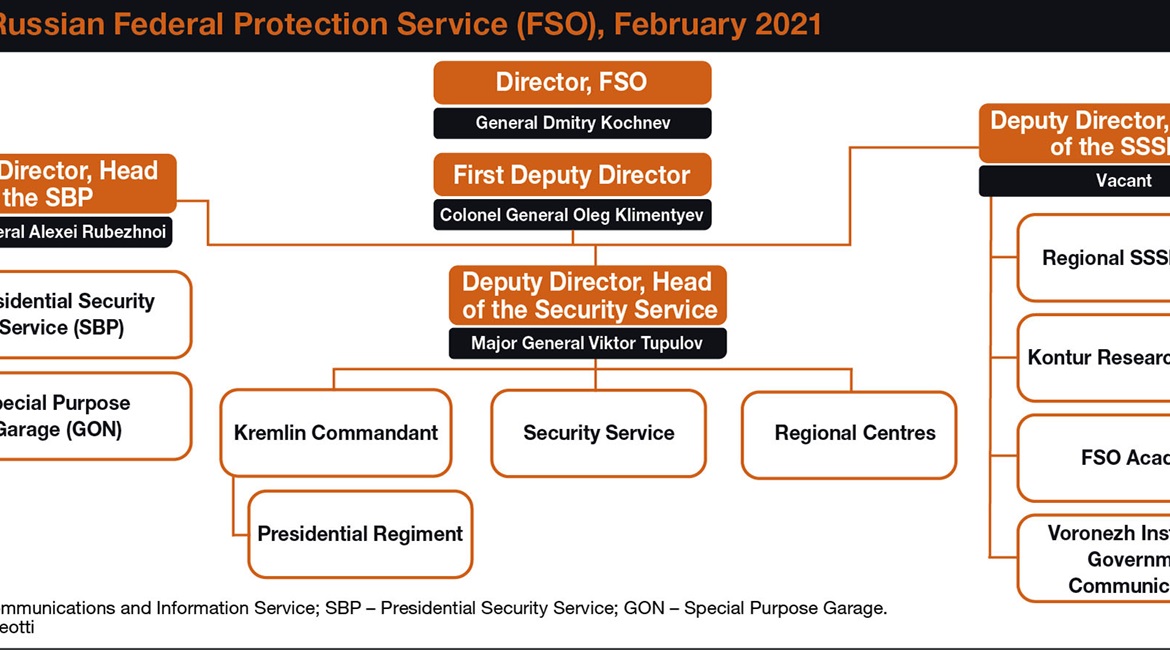
The Federal Protection Service (Federalnaya Sluzhba Okhrany: FSO) traces its history back to the Ninth Directorate of the former Soviet Committee for State Security (Komitet Gosudarstvennoy Bezopasnosti: KGB). In 1991, it became the Soviet Presidential Security Directorate, then later in 1991 the Main Security Directorate of the Russian Federation, and in 1996, it became the FSO. Despite the numerous name changes, relatively few practical changes to the service have taken place.
The service’s real challenges were initially political, relating to the power of Alexander Korzhakov, former bodyguard of then president Boris Yeltsin and later head of the Presidential Security Service (Sluzhba Bezopasnosti Prezidenta: SBP). Although the SBP was formally a subordinate element of the FSO at that time, in practice Korzhakov ran it with considerable autonomy, establishing the infamous departments K and P to investigate corruption in the Kremlin administration and in the government, respectively.
These actions took place wholly outside the SBP’s remit and were largely focused on finding ‘kompromat’ – compromising material – on political rivals. Nonetheless, for years Yeltsin indulged Korzhakov as a useful weapon against his enemies, who had played a significant role in the suppression of parliament in 1993. However, the political costs of support eventually outweighed the benefits, and Korzhakov was unceremoniously dismissed in 1996.

Structure of Russian Federal Protection Service (FSO), February 2021 (Janes/Mark Galeotti)
Monitoring plots
The SBP was abolished as a specific department in 1996 and brought under the supervision of the FSO, then under Colonel General Yuri Krapivin. However, Korzhakov’s influence remained: the SBP lost departments K and P, but the essence of their missions transferred to the FSO.
Looking to read the full article?
Gain unlimited access to Janes news and more...




